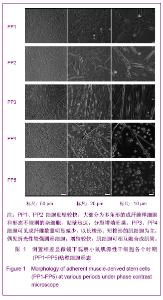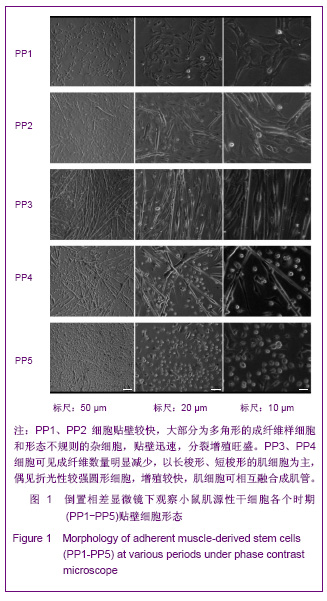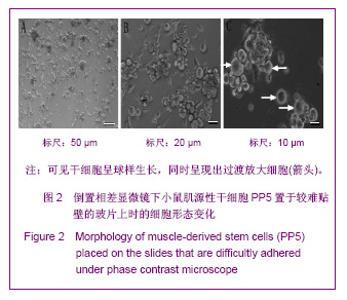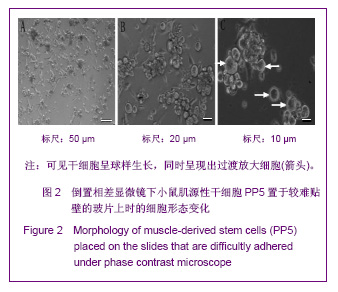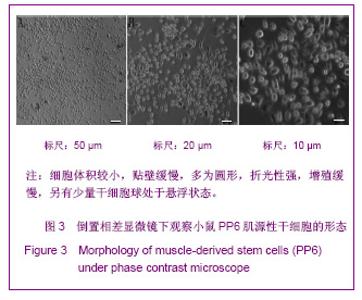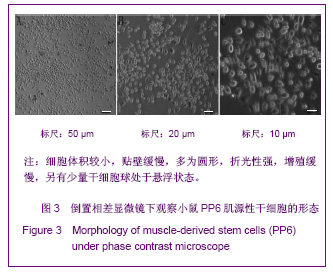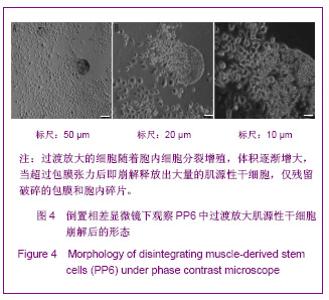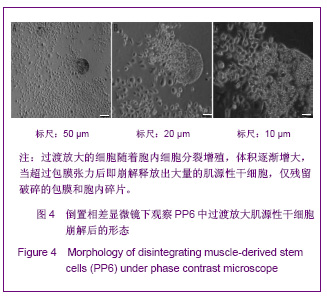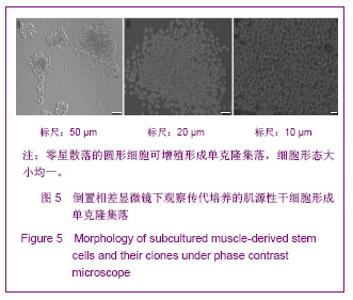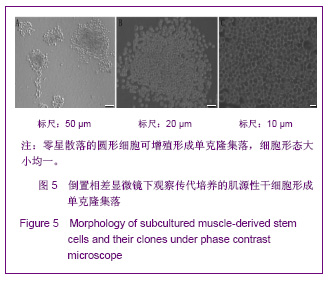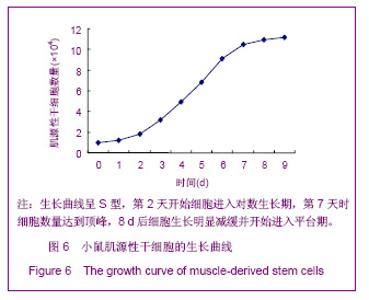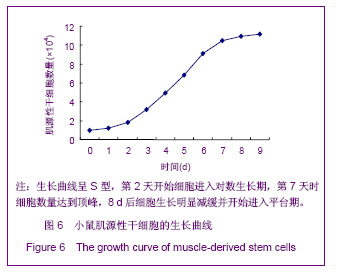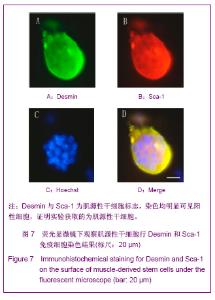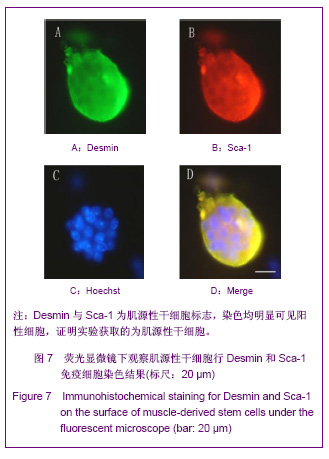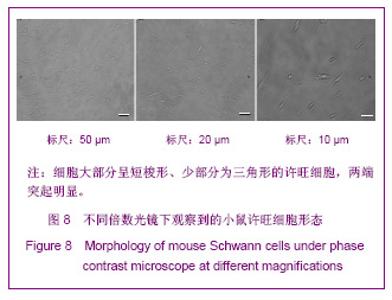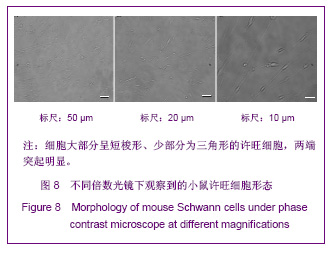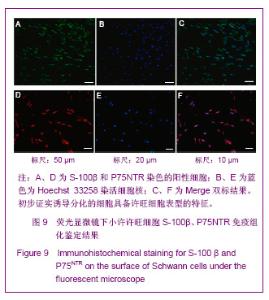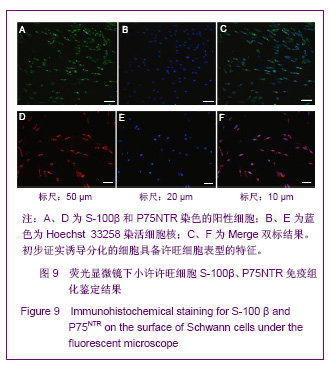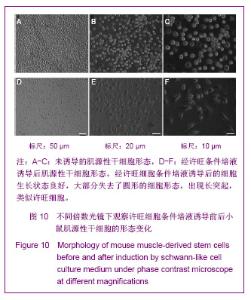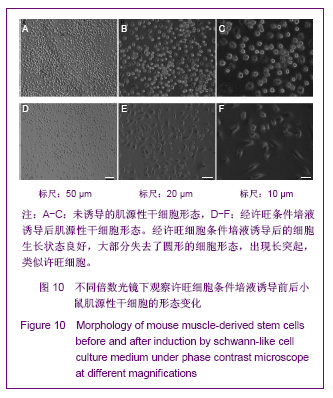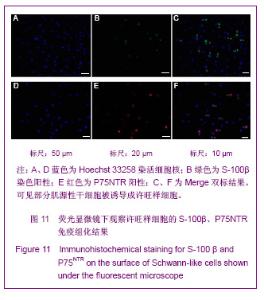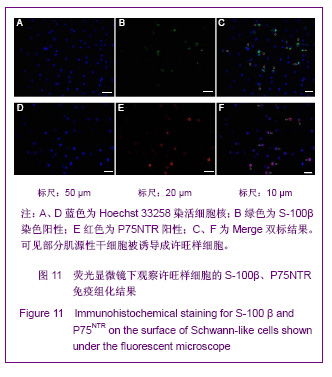| [1] Jang YC, Sinha M, Cerletti M, et al. Skeletal muscle stem cells: effects of aging and metabolism on muscle regenerative function. Cold Spring Harb Symp Quant Biol. 2011;76: 101-111.[2] Tamaki T, Okada Y, Uchiyama Y, et al. Synchronized reconstitution of muscle fibers, peripheral nerves and blood vessels by murine skeletal muscle-derived CD34-/45-cells. Histochem Cell Biol. 2007;128(4):349-360.[3] Zhuqing Qu, Deaasy B, Jankowski R, et al. Identification of anovel population of muscle stem cell mediated gene therapy. J Cell Biol. 2002;157:851-864.[4] Danisovic L, Varga I, Polak S, et al. Morphology of in vitro expanded human muscle-derived stem cells. Biomed Pap Med Fac Univ Palacky Olomouc Czech Repub. 2008;152(2): 235-238.[5] Lee JY, Qu-Petersen Z, Cao B, et al. Clonal isolation of muscle-derived cells capable of enhancing muscle regeneration and bone healing. J Cell Biol. 2000;150(5):1085- 1100.[6] Qu-Petersen Z, Deasy B, Jankowski R, et al. Identification of a novel population of muscle stem cells in mice: potential for muscle regeneration. J Cell Biol. 2002;157(5):851-864.[7] Carnow TB, Barbarese E, Carson JH. Diversification of glial lineages: a novel method to clone brain cells in vitro on nitrocellulose substratum. Glia. 1991;4(3):256-268.[8] Qu Z, Balkir L, van Deutekom JC, et al. Development of approaches to improve cell survival in myoblast transfer therapy. J Cell Biol. 1998;142(5):1257-1267.[9] Deasy BM, Gharaibeh BM, Pollett JB, et al. Long-term self-renewal of postnatal muscle-derived stem cells. Mol Biol Cell. 2005;16(7):3323-3333.[10] Qu Z, Huard J. Matching host muscle and donor myoblasts for myosin heavy chain improves myoblast transfer therapy. Gene Ther. 2000;7(5):428-437. [11] Seger C, Hargrave M, Wang X, et al. Analysis of Pax7 expressing myogenic cells in zebrafish muscle development, injury, and models of disease. Dev Dyn. 2011;240(11): 2440-2451.[12] Hahich A, Jurga M, Markiewicz I, et al. Early appearance of stem/progenitor cells with neural like characteristics in human cord blood mononuclear fraction cultured in vitro. Exp Hematol. 2006;34(7):914-925.[13] Cronin KJ, Messina A, Knight KR, et al. New murine model of spontaneous autologous tissue engineering, combining an arteriovenous pedicle with matrix materials.Plast Reconstr Surg. 2004;113(1):260-269.[14] Dezawa M. Future views and challenges to the peripheral nerve regeneration by cell based therapy. Rinsho Shinkeigaku. 2005;45(11):877-879.[15] Takahashi K, Tanabe K, Ohnuki M, et al.Induction of pluripotent stem cells from adult human fibroblasts by defined factors. Cell. 2009;131(5):861-872.[16] Wehrman T, He X, Raab B, et al. Structural and mechanistic insights into nerve growth factor interactions witl1 the TrkA and p75 receptors. Neuron. 2007;53(1):25-38.[17] Dezawa M, Takahashi I, Esaki M, et al. Sciatic nerve regeneration in rats induced by transplantation of in vitro diferentiated bone-marrow stromal cells. Eur J Neurosci. 2001;14(11):1771-1776. |
